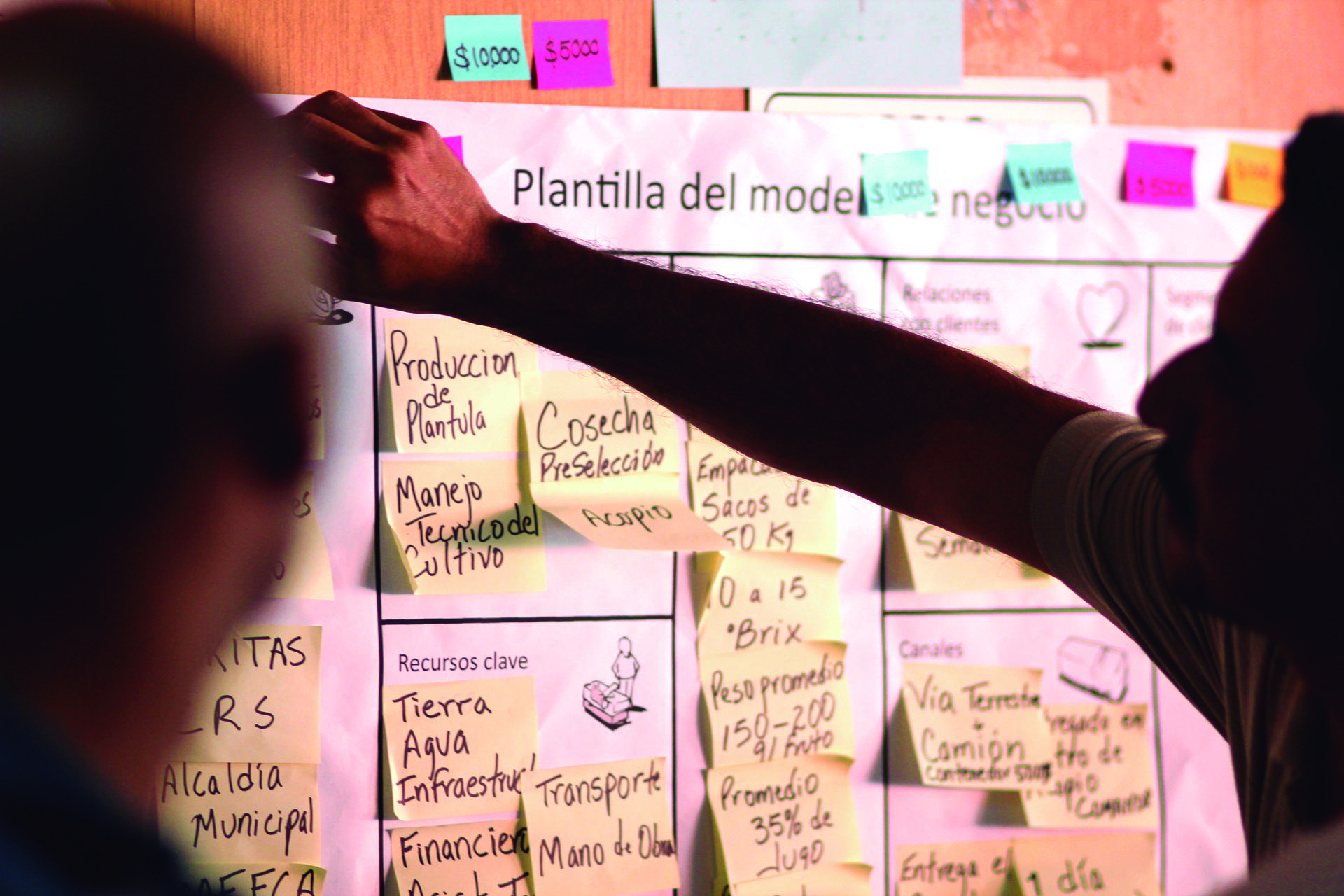LINK Methodology

The LINK Methodology has been an ally to bring small-scale producers closer to emerging markets, reducing asymmetries in business between them through the application of four tools:
Tool 1: The value chain map
Tool 2: The business model canvas
Tool 3: The New Business Model principles
Tool 4: The Prototype Cycle
These four tools promote dialogue between buyer and seller and facilitate putting on the table issues that are difficult to address due to the asymmetries between these two actors. LINK allows to (1) understand the relationship between specific business models (buyer and seller) and the overall value chain; (2) identify critical areas for improvement; (3) design, implement, evaluate, and improve on the business model selected; and (4) evaluate the effects of these changes on smallholder farmers and on the business itself. LINK's goal is NOT to link the poorest farmers to the most demanding markets, but to invest in moving farmers up and making markets more accessible.


In what context is this tool useful?
In general, this tool can be implemented in contexts where a participatory guide for inclusive business models with small farmers is required.
LINK has been implemented more than 80 times in different contexts, and the cases were carried out with farmer organizations from different levels of professionalization, in 9 Latin American and the Caribbean countries (Bolivia, Colombia, Ecuador, Guatemala, Haiti, Honduras, Mexico, Nicaragua, and Peru) 8 Asian countries (Bangladesh, Cambodia, China, Philippines, India, Indonesia, Nepal, and Vietnam) and 12 countries from Africa (Burundi, Ethiopia, Kenya, Malawi, Mozambique, Rwanda, Senegal, South Africa, Tanzania, Uganda, Zambia, and Zimbabwe). These cases were implemented by organizations such as Heifer International (35 cases); Rikolto (11); Hivos, IIED (6); Catholic Relief Services (6), the Colombian Ministry of Agriculture and Rural Development (10); Ford Foundation (3); the Centre for Development Innovation from Wageningen University (5); and 2 SMEs from Africa. These experiences have addressed crops such as Amaranth, Medicinal and aromatic plants, Asparagus, Cocoa, Coffee, Vegetables, Corn, Beans, Honey, Blackberry, Passion fruit, Organic banana, Pigs, Beef, Cow milk, Goat milk, Chicken eggs, Chicken meat, Goat, Sheep, Alpaca fiber, Açai, Biogas, Cashew nut, Peanut, Potato, Banana, Sugar cane, Toquilla straw, Rice, and Mezcal.
Results achieved
Some documented LINK results can be found in the following publications:
Comparative study of three cases where the LINK Methodology was implemented [The result of a participatory systematization process led by the International Center for Tropical Agriculture (CIAT), on the implementation of the LINK Methodology by Heifer International on three study cases within the Rural Women on the Road to Prosperity project.]
Is Inclusive Business for you? Managing and upsclaing an inclusive company: Lessons from the field [The value chain map and the business model principles were applied. The business model principles were used to guide the process of assessing the different business models in terms of inclusiveness and selecting areas of improvement]
Payments for Ecosystem Services in smallholder agriculture: lessons from the Hivos-IIED Learning Trajectory [An adaptation of the value chain map and business model to understand if and how PES and carbon approaches can help smallholders successfully enter and benefit from existing markets]
Next steps / variations
Due to its multiple applications in different geographic regions, business typologies, and cultural contexts, LINK has been adapted many times. Sometimes only 2 or 3 tools from the toolkit have been applied, depending on the needs of the implementer. Other times, LINK has served purposes beyond formal and informal markets to achieve inclusion while promoting payment for ecosystem services, reducing greenhouse gas emissions, and reducing poverty and inequality.
Recently, the methodology was applied to small and medium-sized enterprises (SMEs) in the Gulf of Fonseca, Honduras, and faced one of its major challenges. LINK was designed focusing on commercial alliances between a seller and a buyer different from the final consumer in agricultural chains, but the SMEs not only belong to different areas of the economy (tourism, bakeries and pastries, cafes and restaurants, handicrafts and textiles, multi-service companies, among others), but also offer their product or service directly to the consumer or end customer. To face these challenges, the methodology was adapted through an Excel tool that could be applied in a simple way by the advisors of the SMEs to obtain an improvement plan for performance (commercial, business, and organizational, among others).
Publications
[Story map] Tracking the LINK methodology around the world
[Story] LINK methodology: changing relations between business partners
[Tool powered by Sensemaker™] The Inclusive Business Scan
[Training manual] LINK methodology: a participatory guide to business models that link smallholders to markets, Version 1.0. (Versión en español)
[Training manual] LINK methodology: a participatory guide to business models that link smallholders to markets, Version 2.0. (Versión en español)
[Toolkit] Inclusive Business Models Toolkit: Link Methodology (abridged version)
[Toolkit] Link Methodology: Gender Responsive Manual
[Toolkit] Inclusive Business Models Toolkit: Link Methodology (in Hindi)
[Toolkit] Inclusive Business Models Toolkit: Link Methodology (in Vietnamese)
